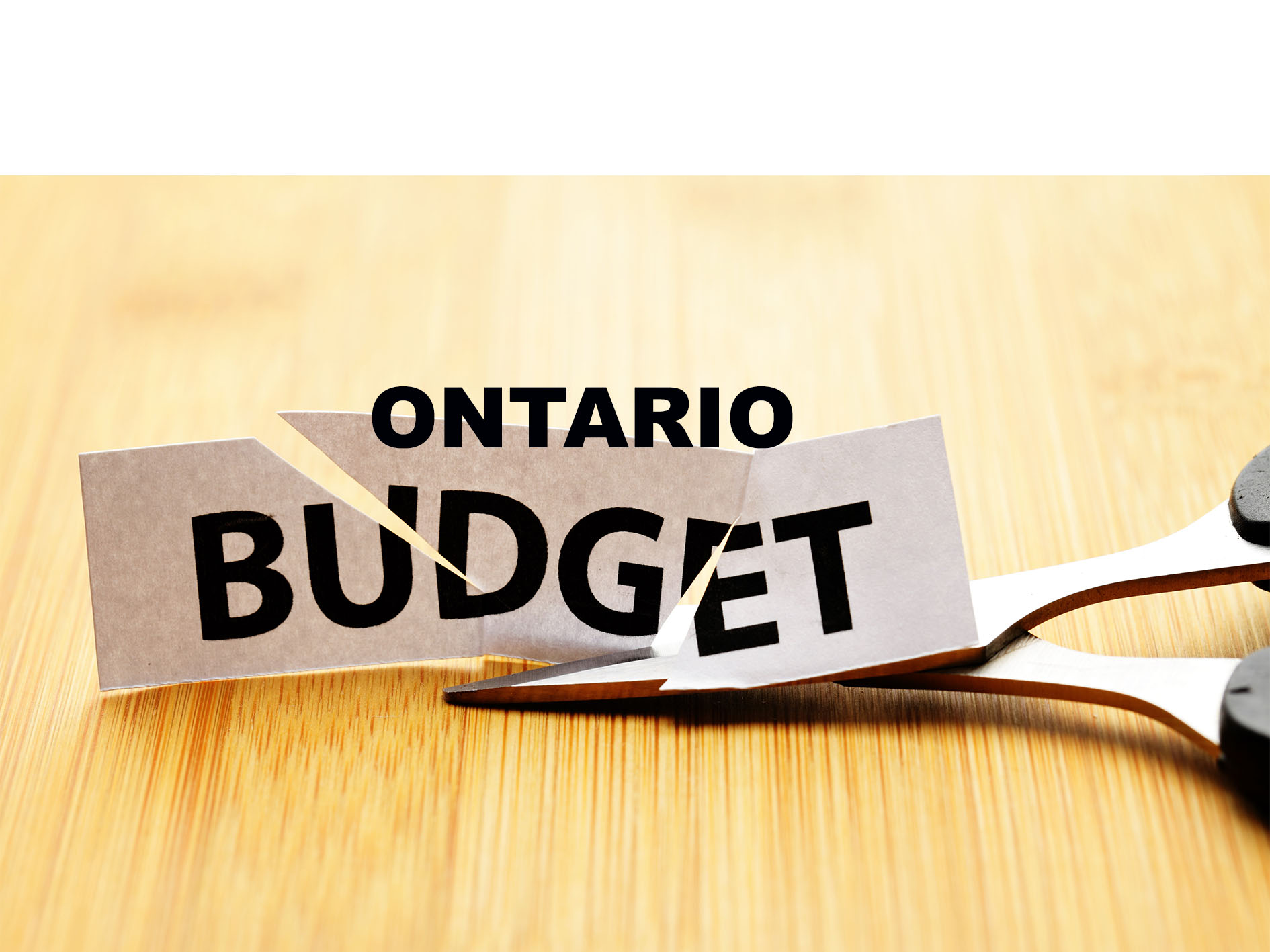Education funding: If it looks like a cut and it hurts like a cut, then it probably is a cut
How an increase becomes a cut
The Ontario government will increase education funding by $1 billion over the next three years. If this sound okay, it’s not – it’s actually a large funding cut, according to two yardsticks.
The first yardstick is the budget approved last year. In the 2018 Budget, education funding was set to increase to $31.5 billion by 2020-2021, in contrast to the $29.8 billion forecast in Ford’s 2019 Budget. That’s a $1.7 billion shortfall in the next two years.
The second yardstick is the cost of maintaining services. The Financial Accountability Office of Ontario (FAO) estimates that education expense must increase by 3.4 per cent annually to keep up with inflation and demand. Accordingly, education funding should be $32.2 billion in 2021-22, as opposed to the $30.1 billion earmarked in Ford’s budget. That’s a $2.1 billion shortfall in the next three years.
Put it simply: $1 billion more on education funding is less than both what was planned and what is needed. Education programs will deteriorate as a result. I call that a cut.
Childcare Tax Credit
The good news in the 2019 Budget would seem to be a new child care tax credit. But that’s a bit of a misleading announcement, too.
Child care investments are desperately needed in Ontario, but tax credits are a backward way of funding these services. In several countries, governments directly fund public child care centres, much as we run schools in Canada. Alternatively, governments can provide parents with upfront subsidies that lower child care costs, as we have done in Ontario for some time.
Tax credits works differently. Here, the government tells parents to figure out a way to pay for child care. Those who do so get a rebate cheque for a portion of the amount spent, a year or so later.
In the program proposed in the 2019 Budget, families with a household income below $20,000 get the full rebate of $500 a month. Now, it is beyond me how families with a household income of $20,000 can upfront $20,220 in childcare fees, which is the median fee for infants in Toronto.
A CCPA analysis found that only 41 kids in all of Ontario will receive $500 a month, a quarter of all kids will get less than $20 a month, and a third will get no benefit at all.
In addition to the flawed design, the problem with this child care tax credit is that it will come at the expense of other priorities. The cost of the tax credit ($390 million a year) is baked into the Ministry of Education budget, which, as noted above, is already well below what it needs to be.
Taking from Paul to only partially pay Peter a year or so later? That seems to be the case here.
Infrastructure funds
Then there is capital funding.
The 2018 Budget earmarked $16 billion in capital grants over 10 years for infrastructure repairs and new schools. The Ford government cancelled $100 million in repair grants right out of the gate, back in July. The 2019 budget earmarked $13 billion for the next 10 years. Here too, investments are trending downward.
Crying poor
Governments have options, though they often claim otherwise.
The PC government, for example, blames Ontario’s fiscal deficit and public debt for its choice to cut public services. But once again, the real story is more complicated.
The government’s Fall Economic Outlook and Fiscal Review inflated the province’s deficit by $7.8 billion. It, used, as its source, not the 2018 budget prepared by Ontario’s public service, not the estimates put forward by theFAO, but rather the findings of a fiscal review outsourced to a private firm.
The Fall Outlook also used misleading indicators to present deficit and debt trends, making them look worse than reality.
Finally, the Ford government fuels concerns about debt and deficit by disingenuously comparing public debt with household debt. They are not comparable. Individuals and families manage debt over a lifecycle, while governments borrow and invest indefinitely. Governments have the power to tax, they manage their borrowing in more sophisticated ways than households, and they have access to much lower interest rates and borrowing costs than private borrowers.
The Ford government’s rhetorical and accounting tricks are nothing less than financial fearmongering.

The alternative budget
It didn’t have to be this way.
CCPA Ontario has proposed an alternative budget that maintains and enhances public services while reducing the deficit and the debt. Our recipe’s secret is quite simple: addressing the province’s longstanding revenue problem.
More specifically, we propose:
reversing the Ford government’s tax cuts, reclaiming $3.3 billion in lost revenues;
increasing corporate tax rates by two percentage points, generating $2.4 billion in additional revenues while leaving rates below what they were in 2010;
and either
increasing Ontario sales tax by 1.5 percentage points, generating $5.2 billion in additional revenues while leaving Ontario’s rates below rates in five other Canadian provinces
or
increasing personal income tax rates between zero and 2 percentage points, depending on income levels, generating $2.8 billion in additional revenues, while making the income tax system slightly more progressive.
The revenue generated through these measures would be sufficient to maintain service levels (i.e.,increase program spending by 3.5 per cent annually); implement service expansions included in the 2018 Budget which the Ford government has fully or partially cut (e.g., public early childhood education for children 2.5 to 4 years of age); and gradually begin to curb deficit and debt levels.
But that’s not where we are headed. Instead, the Ford government has chosen to cut funding to essential public services, including education. And let’s not call it anything else: a cut is a cut is a cut.
Ricardo Tranjan is a political economist and Senior Researcher with the Canadian Centre for Policy Alternatives.
He can be reached at rtranjan@policyalternatives.ca

